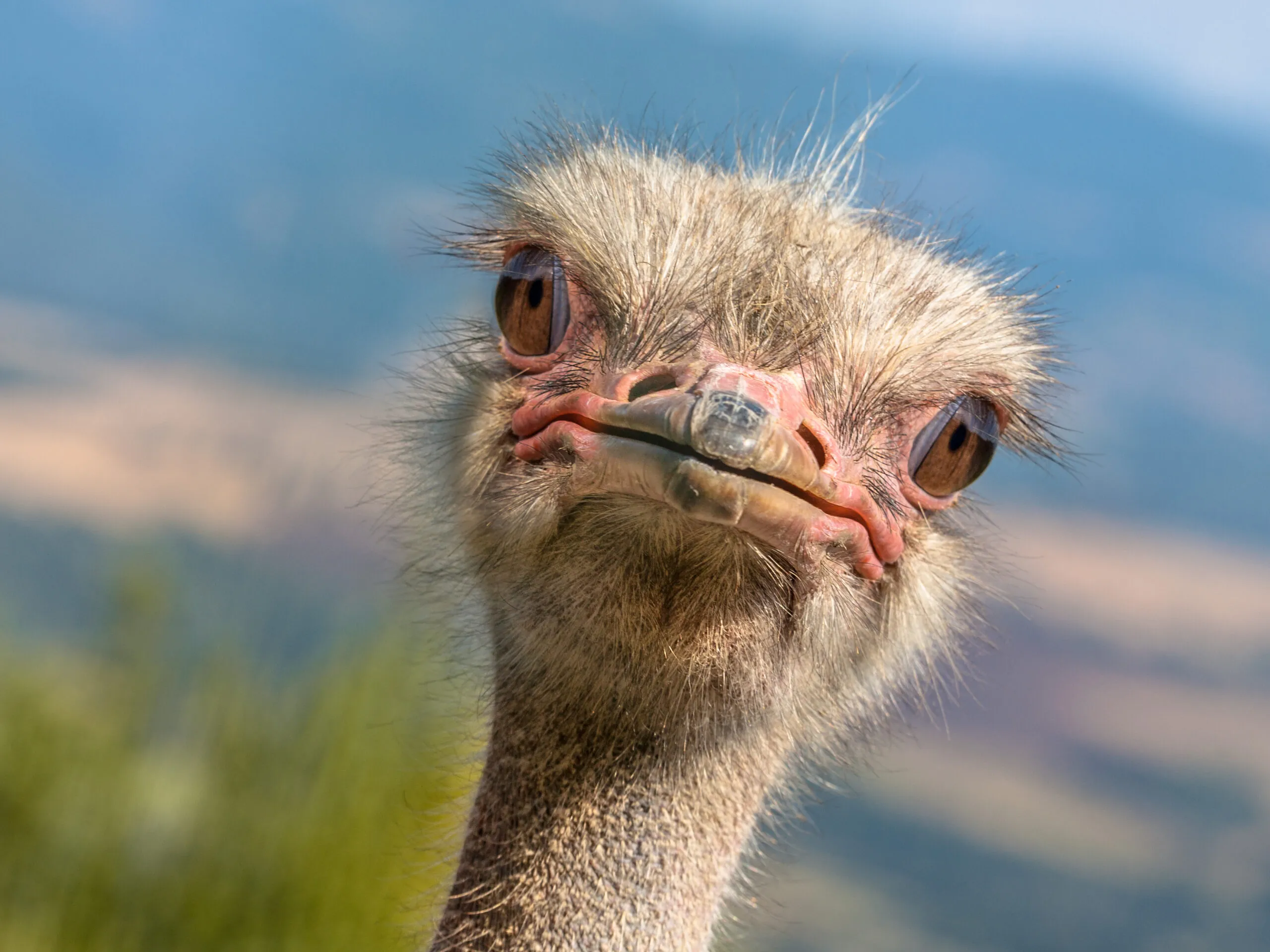Ostrich
Struthio camelus
This species is not currently on view at the Phoenix Zoo.
Big Bird (seriously)
One look at an ostrich egg and you can tell that it is a big bird. In fact, it’s the biggest bird in the world. An ostrich egg can weigh up to a whopping three pounds, and a newly-hatched ostrich chick can be as hefty as a full-grown chicken. Reaching adulthood within a few years, males can stand over nine feet tall and weigh up to 350 lbs. If that’s not impressive enough, they have the biggest eyes of any land animal. It is important to note, however, that an ostrich’s wings are best described as “puny.”
Boom!
Although largely silent, ostriches communicate with a variety of hisses, clucks and chirps, and by snapping their bills. But the most extraordinary ostrich sound is the “boom” (sometimes called “broom”) of the male. Sounding a lot like a roaring lion, he booms when displaying for females or to scare off predators. When booming, the ostrich keeps his bill shut while inflating his neck to three times the normal size. The sound can be heard nearly three miles away.
Get Your Head Out of the Sand!
You may have heard that ostriches bury their heads in sand, but don’t believe it. If an ostrich buried its head in the sand, it would not be able to breathe. This myth likely got started due to natural ostrich behaviors, like lying with their heads on the ground to hide from danger. Also, ostriches lay their eggs in holes that they dig in the sand. As they turn the eggs with their beaks, it may look like they are burying their heads.

Diet: berries, seeds, grasses, leaves, small mammals, reptiles, insects
Zoo Diet: formulated feed, hay, specialized carnivore diet
Habitat: savannas, semi-deserts, sandy grasslands
Height: 6 – 9 ft

Plan your visit today!
The Phoenix Zoo is one of the largest non-profit zoos in the U.S., caring for over 3,000 animals, with nearly 400 species represented, including many threatened/endangered species.

Plan your visit today!
The Phoenix Zoo is one of the largest non-profit zoos in the U.S., caring for over 3,000 animals, with nearly 400 species represented, including many threatened/endangered species.








